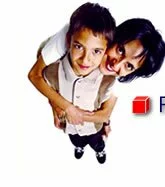 |
 |
 |
 |
||||||||||||||
 |
|||||||||||||||||
|
|
|
|
|
|
|
||||||||||||
|
|
|||||||||||||||||
2001 Study - Gibson Cognitive Test Battery (GCTB)Results following 36 hours of PACE (Processing And Cognitive Enhancement) Training. Changes represent the difference between pre- and post-tests taken 12 weeks apart. Results are from 113 locations. |
||||
|
Change in years when pre-test was two or more years below age |
Number of students in sample |
Change in years when pre-test was below age |
Number of students in sample |
|
|
2.2 |
281 |
1.8 |
632 |
Processing Speed (GCTB) |
|
3.7 |
204 |
3.5 |
393 |
Working Memory (GCTB) |
|
2.3 |
263 |
2.2 |
540 |
Visual Processing (GCTB) |
|
2.8 |
309 |
2.7 |
538 |
Word Attack (GCTB) |
|
6.9 |
671 |
6.7 |
779 |
Auditory Analysis (GCTB) |
|
3.9 |
413 |
3.4 |
610 |
Logic & Reasoning (GCTB) |
|
3.6 |
3.4 |
Overall improvement in processing and cognitive skills in years |
||
2001 Study - Detroit Tests Of Learning Aptitude (DTLA-3)Results following 36 hours of PACE (Processing And Cognitive Enhancement) Training. Changes represent the difference between pre- and post-tests taken 12 weeks apart. |
||||
|
Change in years when pre-test was two or more years below age |
Number of students in sample |
Change in years when pre-test was below age |
Number of students in sample |
|
|
3.9 |
62 |
3.4 |
132 |
Long Term Memory (DTLA-3 DS) |
|
1.9 |
105 |
1.9 |
146 |
Short Term Memory/Attention (DTLA-3 SI) |
|
3.6 |
7 |
3.9 |
11 |
Visual Processing (Closure) (DTLA-3 PF) |
|
3.3 |
58 |
3.0 |
117 |
Logic / Reasoning (DTLA-3 SR) |
|
5.3 |
19 |
4.6 |
44 |
Comprehension (DTLA-3 SS) |
|
1.8 |
33 |
1.7 |
62 |
Visual - Motor (DTLA-3 DR) |
|
3.3 |
3.1 |
Overall improvement in processing and cognitive skills in years |
||
2001 Study - Woodcock-Johnson Test of Cognitive Ability (WJ-R)Results following 36 hours of PACE (Processing And Cognitive Enhancement) Training. Changes represent the difference between pre and post tests taken 12 weeks apart. |
||||
|
Change in years when pre-test was two or more years below age |
Number of students in sample |
Change in years when pre-test was below age |
Number of students in sample |
|
|
8.0 |
43 |
6.6 |
60 |
Long Term Memory (JWCTB TN) |
|
2.9 |
44 |
2.9 |
64 |
Short Term Memory (JWCTB MS) |
|
1.7 |
51 |
1.4 |
130 |
Processing Speed (JWCTB VM) |
|
5.9 |
28 |
5.2 |
40 |
Auditory Processing (JWCTB IW) |
|
5.5 |
13 |
5.2 |
23 |
Visual Processing (JWCTB VC) |
|
4.8 |
4.2 |
Overall improvement in processing and cognitive skills in years |
||
2001 Study - Other TestsResults following 36 hours of PACE (Processing And Cognitive Enhancement) Training. Changes represent the difference between pre and post tests taken 12 weeks apart. |
||||
|
Change in years when pre-test was two or more years below age |
Number of students in sample |
Change in years when pre-test was below age |
Number of students in sample |
Overall improvement in processing and cognitive skills in years |
|
2.7 |
237 |
2.3 |
335 |
Selective Attention (Gibson) |
|
6.1 |
66 |
5.6 |
109 |
Visual Auditory Learning (WRMT) |
|
3.4 |
136 |
3.4 |
203 |
Lindamood Auditory Conceptualization |
2001 Study - Master The Code (MTC)Results of tests from the Woodcock Reading Mastery Test, Gibson Cognitive Test Battery, Lindamood Auditory Conceptualization Test, and Detroit Tests Of Learning Aptitude.Please Note: Master the Code was in development during 2001. Approximately 380 students have completed or are now going through the program. In most cases the results below reflect only 19 hours of instructor guided MTC training what was given in conjunction with PACE. We expect even better results as we collect data on those students who have fully completed Master The Code. |
||||
|
Change in years when pre-test was two or more years below age |
Number of students in sample |
Change in years when pre-test was below age |
Number of students in sample |
|
|
5.1 |
15 |
4.5 |
26 |
Word Attack (GCTB) |
|
9.8 |
29 |
9.8 |
34 |
Auditory Analysis (GCTB) |
|
5.1 |
13 |
4.1 |
23 |
Logic & Reasoning (GCTB) |
|
6.3 |
3 |
6.8 |
4 |
Visual Auditory Learning (WRMT) |
|
4.3 |
4 |
4.8 |
6 |
Word Attack (WRMT) |
|
3.0 |
5 |
2.7 |
6 |
Passage Comprehension (WRMT)) |
|
3.4 |
5 |
3.9 |
8 |
Lindamood Auditory Conceptualization |
|
6.0 |
2 |
5.3 |
4 |
Comprehension (DTLA-3 SS) |
|
PS = Processing Speed; SA = Selective Attention; RF = (letter) Reversal Frequency; FIXV= Calling out a vertical column of numbers (processing speed); FIXH = Calling out a horizontal row of numbers (processing speed); TRCK = Tracking a line with other lines present (processing speed and selective attention);WJ3 = Visual matching from the Woodcock-Johnson Cognitive Test Battery (processing speed); RFRQ = Reversal frequency test from Gardner |
|||
| Business Plan | How it Works | Testimonials | Contact us | FAQ | Home |